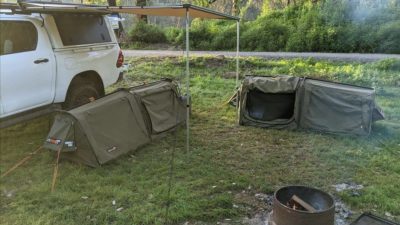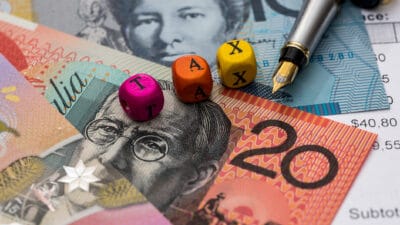I got on a train, this morning.
In more normal times, that isn't newsworthy.
But a check of my Opal card activity (I'm based in NSW) confirmed what I expected: I hadn't used it since February 20, last year.
It is – like the half-price face masks on special when I was at Woolies yesterday – a reminder that life, in Australia at least, is getting back to something approaching normal.
Yes, the train carriage was emptier.
Yes, I expect the city to be less busy than last time I made a peak-hour visit to the CBD.
And yes, we're only 2 weeks into the post-JobKeeper world, and I'm sure there are second-order effects yet to be felt.
And yet, it feels pretty normal.
I know that's tempting fate.
I know we're only one hotel quarantine accident away from community transmission.
(Don't get me started on premiers not bothering to site HQ facilities in more remote areas and not using two-stage quarantine!)
I know, too, that the vaccination rollout is unaccountably slow and, well, badly botched.
And I know that we're bloody lucky (with a nice dose of pragmatic, decisive political leadership at all levels and across all parties), compared to some countries enduring even more lockdowns as we speak.
'The Lucky Country' was supposed to be an ironic critique, but I've gotta say, we've had well more than our fair share over the past few decades, including in the last 12 months.
Not that I'm complaining, of course.
And we still have to deal with the after-effects; notably a ginormous national debt, and fast-rising house prices thanks to the 'kitchen sink' monetary policy the RBA thought was necessary to get us quickly out of recession.
Which all begs the question: Where to, from here, for investors?
As you well know, I don't do predictions. But we can place ourselves in context.
In March and April, we had the usual share market panic that follows bad news.
I said at the time it was an overreaction and shares were cheap.
From June to November, we had a rally: two parts 'oops, we overreacted' and one part 'this is the new normal'.
Then we had the vaccine news, and COVID beneficiaries like e-commerce businesses got towelled up as their share prices fell hard, while the 'back to the old normal' trade played out.
And now?
Well, overall, the market is essentially back to its pre-COVID highs. We have, at least at a total-market level, put the pandemic behind us.
But dig a little deeper, and I think there's risk and there's opportunity.
Let's take them in turn.
I wrote last week about the property market. Now that it's truly become a 'financial' market, with all of the good and bad that implies, we should expect housing to be more volatile, especially as rates move.
And, while I've been wrong before, absent wage increases, I'm not really sure how much more upside there can reasonably be in prices. Perhaps more worryingly, if I'm wrong, that just makes borrowers more vulnerable when rates do eventually rise. (I hope the RBA and the banking regulator, APRA, step in, soon, with regulatory measures that ensure borrowers aren't going to be hung out to dry in a few years' time, too.)
You want to own the banks in that market?
I don't.
And then there are our miners. I'm on record as not being a fan, in general, because they're tough businesses to make a quid from.
Commodities rarely provide long-term value generation.
But right now, I'm more concerned than usual. Iron ore prices are unsustainably high. The oil price has recovered. And despite the economic and stock market recovery, the price of gold is much higher than this time a couple of years ago, even after falling in the past few months.
If you're going to buy commodities, I wouldn't do it when prices remain so high, relative to the cost of production. There's a long way left for them to fall if they do.
That – and the (lack of) size and influence of technology and growth companies in Australia – explains to a large degree why the US market rocketed to new highs months ago, and we're only just regaining our level of early last year.
There's an upside, though.
Two, actually.
The first is one for another day, but worth mentioning here, briefly: you really should be investing overseas. Both because it gives you diversification (currency, geography, industry…), but also simply because it's statistically likely some of the best companies – and investment opportunities – on the planet are not on the ASX, and we shouldn't let exchange bias hold us back.
The second, though, is relevant, because it's the aforementioned industries (and others, besides) that are the underappreciated opportunities, once you look past the miners and the banks.
I own and recommend Kogan.com Ltd (ASX: KGN) shares, for example. They got whacked in late 2020 as the market abandoned them while preparing for the new-old normal, but its PE, according to CommSec is equal to that of Woolworths Group Ltd (ASX: WOW).
I don't know about you, but I reckon Kogan's growth potential is reasonably larger than our largest grocer.
Yes, the pandemic gave a one-off shot in the arm for online retailers. Yes, sales might even fall, year on year, in some upcoming months. But look out 12-24 months and ask yourself if fewer people will be shopping online.
I doubt it, so I'd be looking at others like Temple & Webster Group Ltd (ASX: TPW), too.
In fact, I reckon you can look right across the small and mid-cap growth sectors for opportunities right now. (Note: I didn't say they were all opportunities, just that that's where you can find some!)
There are heaps of 'left behind' companies, abandoned when people rushed back to the 'old faithful' old-normal businesses.
It's true that 'new normal' is overused and often straight-out wrong.
But some businesses that continue to have long term growth potential have been thrown out with the bathwater.
I reckon you should be looking there, because they are the companies of the future… the ones that, in the future, we'll consider 'normal'.
Fool on!









